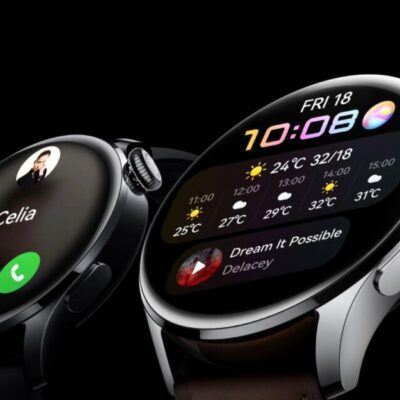Google’s Pixel Watch incorporates a fall detection feature that actively monitors users and offers assistance in case of a potential medical emergency. In a blog post on their official Keyword blog, Google elaborated on the development process behind implementing fall detection on their inaugural smartwatch.
To accurately define a “hard fall,” Paras Unadkat, the product lead for the feature at Google, emphasised the significance of amassing a substantial amount of data and training artificial intelligence (AI) models using diverse datasets. This enabled them to differentiate between various patterns of motion associated with falls.
To achieve this, Google collaborated with universities and research labs already investigating the characteristics of falls as detected by motion sensors. Experimental setups were designed to simulate falls and observe individuals’ responses when losing balance. Employing computer vision techniques, Google sought to visualize distinct types of falls. The company also considered the principles of physics and accounted for the variations in human limb length and body types.
Through this comprehensive approach, Google strived to develop a fall detection feature that could accurately identify potential incidents and offer timely support to users wearing the Pixel Watch.
The fall detection feature on the Google Pixel Watch is designed to provide an added layer of safety. If the watch detects a significant fall and detects no movement for approximately 30 seconds, it initiates a series of actions to ensure the user’s well-being. It vibrates, sounds an alarm, and sends a notification to check if the user is okay. If there is no response or movement after about a minute, the watch automatically contacts emergency services and shares the user’s location.
But how does the watch differentiate between a fall down the stairs and other activities like burpees? The process involves a combination of motion sensors, AI algorithms, and even the involvement of stunt doubles during the development phase. Here’s a glimpse into how the fall detection feature functions and how Google built it to be as effective and helpful as possible.

Sensing motion from inside your watch
The Pixel Watch is equipped with a variety of small sensors that gather data to power its useful features. These sensors serve different purposes, such as tracking heart rate for sleep quality assessment or detecting ambient light to adjust the display brightness for better visibility. In the case of fall detection, motion sensors play a crucial role.
The motion sensors in the Pixel Watch analyze your body’s natural reactions to a fall, including arm movements and impact force. However, distinguishing between regular movements and a serious fall poses a challenge. Many daily activities may exhibit similar motion patterns to a fall, such as a slight stumble during a soccer game or performing jumping jacks during a workout, neither of which require emergency assistance.
To address this challenge and provide accurate fall detection while minimizing false alarms, the engineering team behind the Pixel Watch developed AI algorithms. These algorithms were designed to differentiate between a genuine hard fall that may require help and movements that resemble falling but are not of serious concern. The first step in creating these algorithms involved gathering extensive data for analysis and training.
Teaching AI algorithms to detect hard falls
According to Paras Unadkat, the product lead for the fall detection feature, training AI models to differentiate between various motion patterns involved collecting substantial amounts of data from different datasets. However, asking people to intentionally fall without safety precautions was not feasible. To address this challenge, the team collaborated with existing research labs that were studying falls as detected by motion sensors. They set up controlled environments and observed participants’ reactions to losing balance, gaining insights into the different components of a fall.
To account for various factors that can influence how falls are interpreted by sensors, the Pixel Watch team turned to computer vision. They collaborated with another research team at Google to analyze real-life fall videos, simulating the physics of falls while considering variables like limb lengths, body types, and different surfaces people may land on.
Once all the data was gathered and integrated into the fall detection algorithms, real-world testing was conducted to assess the performance of the AI system. In a creative approach inspired by Hollywood practices, the team worked with stunt doubles in Los Angeles for a week. The stunt doubles wore Pixel Watches and were directed to execute different types of falls, allowing the team to evaluate the accuracy and effectiveness of the fall detection feature in practical scenarios.
Making calls for help when you need it
After ensuring the effectiveness of the fall detection feature, the Pixel Watch team conducted extensive testing on several hundred individuals for over a year. The goal was to ensure that false alarms were minimized, preventing unnecessary inundation of emergency services. Testers wore the watch during high-energy activities such as jumping, swimming, and doing burpees to verify that these movements wouldn’t trigger false alerts. Additionally, the emergency dispatch community collaborated in testing the watch’s automatic call function to ensure that the calls were clear and provided helpful information.
To enable the fall detection feature on your Pixel Watch, you can follow these steps: On the watch itself, navigate to “Personal Safety” and then “Fall detection” to enable the feature. Alternatively, you can access the Watch Companion app and go to “Watch Preferences,” then tap on “Safety & Emergency.” Make sure to grant location permission for fall detection so that the feature can share your location with emergency services if necessary. If you want to contribute to the improvement of fall detection algorithms over time, you can toggle on the “Help improve fall detection” setting. By doing so, the motion sensor data from your watch may be used to enhance this safety feature in the future.








